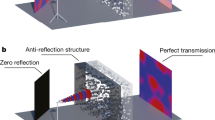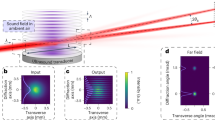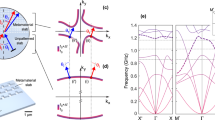Abstract
A REMARK has just occurred to the writer, on turning over the account of cognate phenomena in Rayleigh's “Theory of Sound” (vol. 2, § 270), which seems to be of weight in this subject and may indeed be already familiar as a guide to observers. Long waves can penetrate a heterogeneous atmosphere of the lumpy type much better than shorter waves the length of which is comparable with the dimensions of the patches scattered through the medium. But in reflection from a layer of transition the opposite conditions prevail, the longer waves being most turned back: for reflection is only sensible when the gradual change of properties is completed within a depth small compared with the wave-length, though the new values must afterwards be maintained for a depth at least comparable with the wave-length. Atmospheric reflection downward must be in any case slight so that the augmenting of the effect by lengthening the waves may be an effective mode of test.
This is a preview of subscription content, access via your institution
Access options
Subscribe to this journal
Receive 51 print issues and online access
$199.00 per year
only $3.90 per issue
Buy this article
- Purchase on SpringerLink
- Instant access to full article PDF
Prices may be subject to local taxes which are calculated during checkout
Similar content being viewed by others
Author information
Authors and Affiliations
Rights and permissions
About this article
Cite this article
LARMOR, J. Wireless Reflections and Echoes. Nature 126, 504 (1930). https://doi.org/10.1038/126504d0
Issue date:
DOI: https://doi.org/10.1038/126504d0



